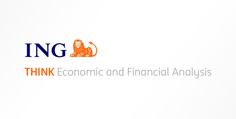Energy
Following the heavy sell-off on Friday, the oil market had a relief rally on Monday. At one stage, Brent crude managed to trade almost 6% higher. But in the end, it finished only about 1% higher. Comments from the World Health Organization (WHO) that the Omicron variant is potentially a “very high” global risk would have not helped market sentiment as we moved through the day.
It is still too early to sensibly assess the risk that Omicron poses and this uncertainty is likely to add further volatility to the oil market. The uncertainty of this latest variant will also make the job of OPEC+ more difficult. The group has already delayed its Joint Ministerial Monitoring Committee and Joint Technical Committee meeting to later in the week, in the hope that more information with regards to Omicron would become available. The full ministerial meeting will go ahead as planned on Thursday. We would not rule out the group pausing its supply increases over January.
Iranian nuclear talks resumed. Heading into the meeting, hopes for reaching a deal appeared low. However, the EU has said that the first day of talks was positive, while Iran said it was “optimistic” after the first day. How these talks evolve in the coming weeks is important for the oil market. Lifting sanctions on Iran would see a sizeable increase in Iranian supply. Iranian output is currently around 2.5MMbbls/d, while prior to the US pulling out of the nuclear deal, Iran produced as much as 3.8MMbbls/d.
The European natural gas market saw further strength Monday, with TTF settling more than 6% higher on the day. Colder weather is forecast for the next 2 weeks across parts of Europe which once again raises concern over tightness in the market. European storage levels are falling faster than usual and this will probably only accelerate as we move deeper into winter.
European gas storage is a little under 70% full, compared to a 5-year average of almost 86% at this stage of the year. Russian gas flows to Europe continue to disappoint. Daily Russian flows have increased by around 43% since the start of the month, but they are around 22% below the levels seen at the same stage last year.
Metals
The Omicron variant has dictated price action across the metals complex recently. After a heavy sell-off last week, industrial metals rebounded tentatively on Monday following the broader macro markets rally. While the severity of the new variant remains a big uncertainty, it casts a shadow over demand growth in the near future and further complicates the supply chain.
In particular, imports of blister/anode from Africa to China may experience further delays and could potentially lead to a supply gap of copper raw materials. Also, China announced that it would temporarily suspend all non-container goods shipments at the Erenhot border crossing with Mongolia due to COVID control measures.
In the concentrate market, participants are awaiting the annual benchmark TC/RC for 2022 with major miners and smelters said to be still in negotiations. For most LME metals, declining stocks continue to provide some support to markets. Nickel stocks have slid to a two-year low of a little more than 115kt. On the raw material side, firm nickel ore prices due to the Philippines going into the rainy season have also supported the class 1 nickel market.
Norilsk Nickel in its latest update estimates that the global nickel market will be in deficit by 149kt in 2021, compared to previous estimates for a surplus of 52kt. The revision in the numbers was made following a larger than expected recovery in the stainless steel market and robust demand from the battery sector. In addition, slower than expected growth in Indonesia’s NPI capacity also added to the rising gap between global supply and demand. For 2022, the nickel market is expected to move to a surplus of 59kt.
As for iron ore, both SGX and China Dalian markets extended their rally after signs of stock replenishing by Chinese mills. Also supportive for the market was Vale (NYSE:VALE) trimming its production guidance for this year from 315-335mt to 315-320mt, while also providing a production range of 320-335mt for 2022, which was below what many in the market were expecting.
Agriculture
CBOT wheat came under pressure yesterday as the Australian Bureau of Agriculture and Resource Economics and Science (ABARES) increased its winter wheat crop production forecasts to 34.4mt in 2021/22 compared to an earlier estimate of 32.6mt. Favorable weather during the growing phase, including sufficient rains and mild temperatures during September-October, have helped wheat yields to rise for the current crop.
The Bureau expects winter wheat yields to increase to 2.65t/ha (ton per hectare) compared to an earlier estimate of 2.52t/ha and last year’s 2.59t/ha. Excessive rains over the current month have deteriorated the quality of the crop. However, its impact on total wheat production appears to be relatively small. For next year, the Bureau believes that a La Nina event is established, which should mean favorable weather in Australia over the summer.
In Europe, Russian wheat exports were reported to have dropped by 17% YoY to 18mt for the current 2021/22 season; although it was largely offset by higher supplies from Ukraine, where exports have increased 22% YoY to 14.5mt.
Disclaimer: This publication has been prepared by ING solely for information purposes irrespective of a particular user's means, financial situation or investment objectives. The information does not constitute investment recommendation, and nor is it investment, legal or tax advice or an offer or solicitation to purchase or sell any financial instrument. Read more
